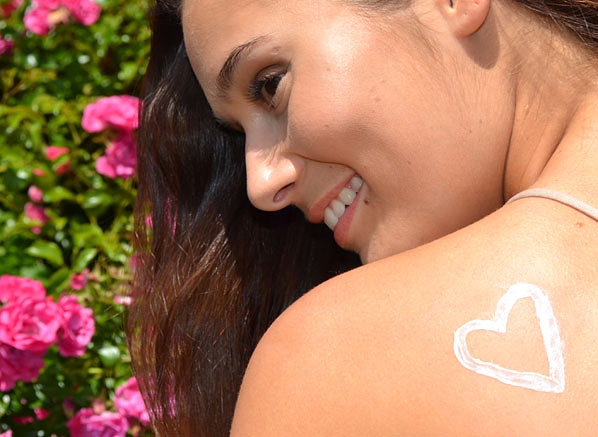

Are you a fountain of knowledge when it comes to sun protection, or could you do with a little sun care study session? For many the knowledge that they’re wearing SPF isn’t enough, and they want to be fully versed on the how, what and why’ of sun protection – if that’s you, you’ve come to the right place!
It’ll be no shock that the more you know about the damaging effects the sun can have on your health, the more you can do to protect against and prevent it. From the invisible rays you should keep in mind at all times, to the varying sunscreens you could have never known existed, we have the answers to the hot sun care topics that everyone is talking about.
![]()


 UVA and UVB Rays
UVA and UVB Rays
The majority of people will know that UV rays are the silent enemy when exposed to the sun, but what exactly they are and how they affect us may not be as well known. UVA and UVB rays are part of the electromagnetic (light) spectrum that reaches earth from the sun, and both can cause cancer and lasting skin damage. UVA is the longer wave UV ray that causes skin ageing, whilst UVB is the shorter wave UV ray that causes the skin to burn.
Most sunscreens will protect the skin against UVB rays but if you’re looking to protect against both UVB and UVA rays, which I highly recommend, you’ll need to use a broad spectrum SPF.
The Avene Sun Care Very High Protection Spray SPF50+ is a broad spectrum SPF that protects against UVB and short and long UVA rays, presenting itself as an all-round power protector.
![]()
 SPF
SPF
The SPF level of a sunscreen indicates the level of protection it offers against UVB rays, the rays that causes sunburn. An SPF15 is the recommended minimum protection when exposed to the sun, but of course it is common knowledge that you should wear as high a factor as you can.
If you have darker skin, it can be a misconception that you need not wear sunscreen. However this minimum recommendation still applies as like sunburn, a tan is the result of DNA damage from exposure to the sun’s harmful UV rays. As physical (inorganic) can often be ashy or chalky on the skin, a chemical (organic) sunscreen like Shiseido Sun Protection Lotion SPF 15 will ensure darker skin remains protected.
SPF should be applied first thing in the morning, before your moisturiser or your makeup so that it sits closest to your skin. A few common mistakes people make with sunscreens are not applying it in enough time before sun exposure (recommended 20 minutes prior), not reapplying frequently enough after swimming or sweating (every two hours), and not checking the expiry date. Most sunscreens have a shelf-life of 2-3 years as long as they have not been kept in direct sunlight or at high temperatures.![]()

 Chemical VS Mineral Sunscreens
Chemical VS Mineral Sunscreens
Chemical screens, also known as organic screens are the most common form of sun protection. Made up of carbon compounds that are made in labs, they absorb UVB rays like a sponge and release the energy harmlessly.
This type of sunscreen takes a little more patience, as they need to be applied 20 minutes prior to sun exposure. But a couple of the main reasons chemical screens are picked over mineral screens (also known as inorganic and physical) is down to application and price. Chemical screens come in a myriad of varieties like the Clarins Sun Control Stick SPF30 or the SunSense Ultra for the Familly Roll on SPF 50+. Products like this make sunscreen application easier and are often the solution for on-the-go families; however, chemical sunscreens can sometimes cause irritation to sensitive skin.
Mineral sunscreens contain titanium dioxide and zinc (used for over 100 years in treating nappy rash), which sit on the skin and reflect UV rays away, almost acting like a wall between the sun and your skin. The texture of physical screens can often be greasy and thicker than that of chemical screens, and often feel ashy or chalky.
One of the main factors that set mineral sunscreens apart from chemical is their anti-inflammatory benefits. The Bioderma Photoderm Mineral SPF50+ is ideal for allergic and intolerant skin as it’s created with 100% mineral UVA/UVB protective filters to suit the specific needs of highly reactive skin.
Mineral screens will also protect from the first swipe and won’t decompose through sun exposure, meaning they will sit and protect for longer on the skin.






